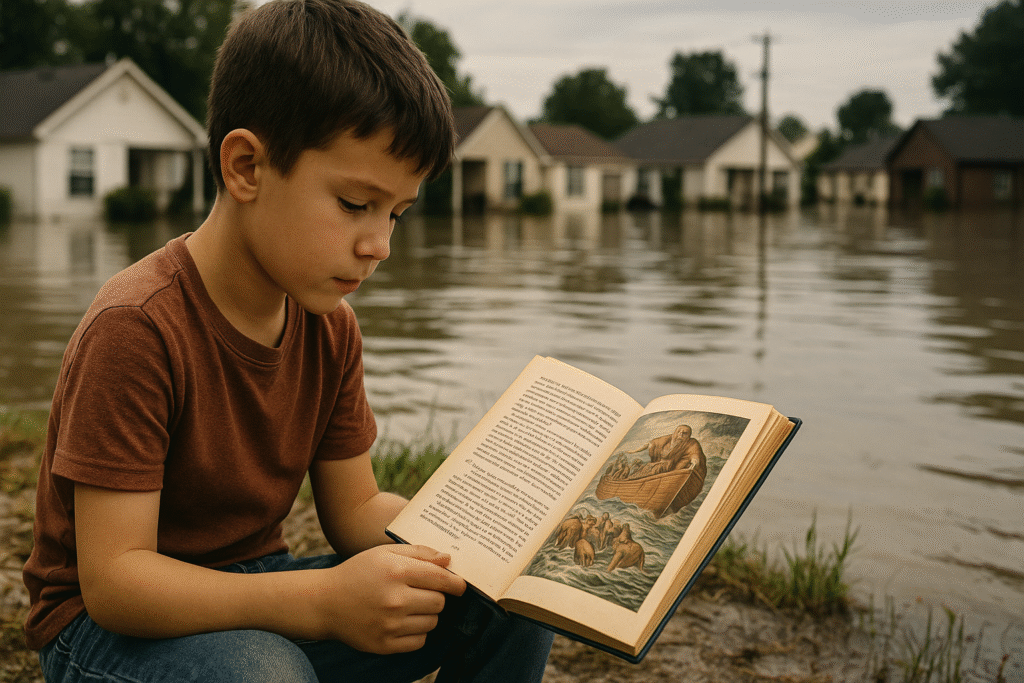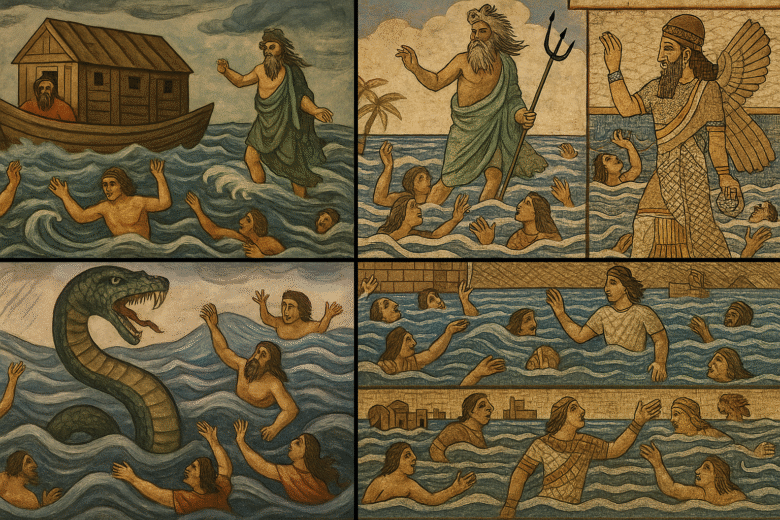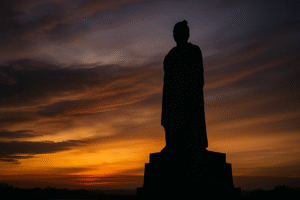Fun fact: Nearly every major ancient civilization—from Mesopotamia to Mesoamerica—has its own version of a catastrophic flood story.
It’s strange when you think about it. Civilizations separated by continents and centuries—Sumerians, Hindus, Greeks, Norse, Chinese, Mayans—all tell eerily similar stories of a great flood that wiped out the world, often sparing only a chosen few. Coincidence? Cultural borrowing? Or could these ancient myths be echoes of real, geological events?
In this blog, we dive into why every civilization had a flood story and explore what happens when myth meets geology. Because sometimes, the line between legend and reality is not as clear—or as dry—as we think.
The Universal Flood Myth: Too Widespread to Ignore
The flood myth is one of humanity’s most persistent cultural motifs. It appears in:
Mesopotamia: The Epic of Gilgamesh (circa 2100 BCE) describes a god-sent flood to destroy humanity, with a lone survivor, Utnapishtim, building a boat to save life.
India: In the Matsya Purana, Lord Vishnu takes the form of a fish to warn Manu of a coming deluge.
Greece: Zeus floods the Earth to punish mankind, sparing only Deucalion and Pyrrha.
China: The Gun-Yu flood myth tells of massive floods controlled by the hero Yu the Great.
Mesoamerica: The Maya believed a previous world ended in a flood caused by the gods.
The Bible: Noah’s Ark is perhaps the most famous version, where God floods the Earth to cleanse it of corruption.
What makes this remarkable is not just the recurrence of floods, but the near-identical plotlines: divine warning, righteous survivor, ark or boat, animals rescued, and a rebirth of civilization. Were our ancestors all just borrowing from each other? Or is something else going on?
Flood Myths as Psychological Archetypes?
Some anthropologists argue these stories are archetypes—recurring symbols of renewal and destruction in the collective human psyche. Just like fire symbolizes transformation and snakes symbolize danger or rebirth, the flood may symbolize a cleansing of sin, chaos, or excess.
Carl Jung, the Swiss psychiatrist who popularized the idea of the “collective unconscious,” believed that these flood narratives represent our shared fear of being overwhelmed—emotionally, spiritually, or physically. The flood is a metaphor for personal and societal collapse.
But is metaphor all it is?
When the Ground Speaks: Geology Weighs In
Geologists and archaeologists have long wondered if these myths are echoes of real, catastrophic events that our ancestors witnessed—and passed down as stories.
Here are some plausible geological candidates:
The Black Sea Deluge Hypothesis
In 1997, geologists William Ryan and Walter Pitman of Columbia University’s Lamont-Doherty Earth Observatory proposed that a sudden rise in sea level around 5600 BCE caused the Mediterranean Sea to flood into the Black Sea basin. They estimated that 50 cubic kilometers of water per day surged through what is now the Bosphorus Strait, drowning ancient settlements.
Could this be the basis for Noah’s flood or Gilgamesh’s account?
End of the Ice Age Sea-Level Rise
Around 11,700 years ago, as the last Ice Age ended, melting glaciers raised global sea levels by over 100 meters. Coastal settlements were swallowed, and entire landscapes changed. Imagine watching your village slowly sink underwater—wouldn’t you call it the wrath of the gods?
Tsunamis and Megafloods
Catastrophic events like the Storegga Slide (a massive submarine landslide off the coast of Norway 8,000 years ago) caused huge tsunamis that hit Scotland and northern Europe. In the Indian Ocean, geologists have found evidence of massive tsunamis that may have inspired ancient Indian and Southeast Asian flood tales.
In short: these myths may not be fiction—they might be memory.

India’s Own Flood Legacy
India’s flood story, found in texts like the Satapatha Brahmana and the Matsya Purana, is one of the oldest. Manu, the first man, is warned by a divine fish (an avatar of Lord Vishnu) about an impending flood. He builds a boat, saves seeds, animals, and sages, and survives to repopulate the Earth.
The story is older than the Bible’s account and shares remarkable similarities. It also has a philosophical angle: the flood is not just destruction, but purification. A reset button on human arrogance and spiritual decay.
Interestingly, this tale may have been inspired by real flooding events in the Indus Valley or in the Himalayan foothills, where rivers like the Ganga and Yamuna frequently burst their banks.
Case Study: Dwarka and the Lost Cities Beneath the Sea
Off the coast of Gujarat, marine archaeologists have discovered submerged structures near modern-day Dwarka, which some believe to be the ancient city mentioned in the Mahabharata. Though the findings are debated, sonar scans show evidence of man-made structures, roads, and walls now underwater.
If verified, these could point to cities swallowed by rising seas—fuel for ancient memory and myth.
Why These Stories Still Resonate
There’s a reason disaster movies so often turn to flood scenarios—from The Day After Tomorrow to 2012. Floods are primal. They overwhelm. They erase boundaries between land and sea, safety and danger, control and chaos.
And in the age of climate change, these myths feel prophetic. Rising seas, record rainfall, and glacier melt are already creating new flood stories—real ones. We may not need gods to bring the next deluge.
Perhaps the ancients weren’t telling fairy tales. Perhaps they were warning us.
Conclusion: Myths with Mud on Their Boots
So, why did every civilization have a flood story? Because floods were terrifyingly real. Because water, which gives life, can also take it away. Because communities remembered, mourned, and mythologized the deluge. And because these stories, once oral traditions, became spiritual frameworks.
In the overlap between geology and mythology lies something powerful: truth wrapped in symbolism.
And maybe, just maybe, the next time we call something a “myth,” we should check the fault lines first.
Author’s Note
I’ve always found it eerie how our ancestors—who never met, who never read each other’s stories—still imagined the same watery apocalypse. Writing this piece reminded me that sometimes, the ground beneath myths isn’t so solid after all.
G.C., Ecosociosphere contributor.





Comments
I love the efforts you have put in this, thanks for all the great content.